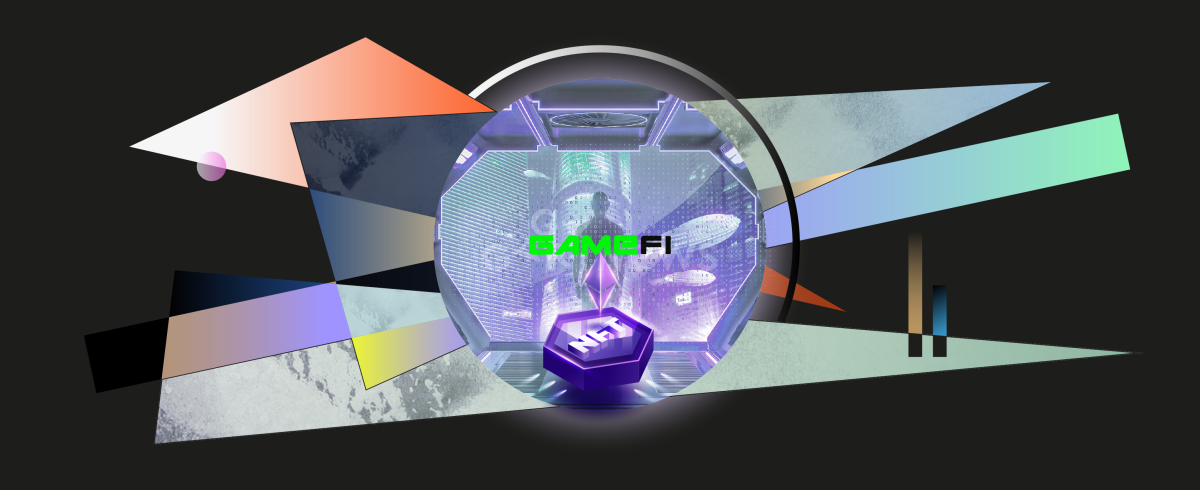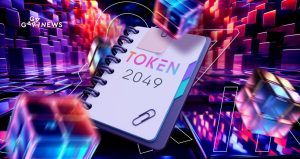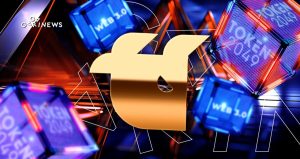The realm of GameFi

What is GameFi and how does it stand out in the gaming industry?
On this page
We’ve all heard of online games and MMORPG giants like World of Warcraft or the South Korean Lineage II. These games had their own fictional built-in economy where you could upgrade your character, earn gold, trade artifacts and so on. In some instances, players even sold their unique online items to each other for real cash in the offline world. Yet all of these perks and valuables were still confined within the framework of the game’s universe that was tied up to a centralized server. Gamers had status and high-level characters in the virtual world, yet it had no actual significance in the real world.
So what makes GameFi and blockchain-based games any different? Well, imagine if you could trade World of Warcraft gold on a cryptocurrency exchange or keep your unique artifact on blockchain. GameFi merges gaming and finance into one single entity that allows players to generate earnings by simply playing a game. This is also coined as play-to-earn (P2E) games.
The natural development and progression of games reside not just in Unreal Engine 4 graphics and near-reality visuals in video games, but also in uniting gaming with the fastly-growing decentralized finance and blockchain technology industry. And it’s not the case of game-fi casinos or gambling platforms, as blockchain games are an entirely different and promising entity.
The emergence of GameFi
Bitcoin was invented in 2008 yet GameFi projects have only been gaining momentum in recent years. That is because blockchain technology had to form its base in order for GameFi to thrive and gain attention as it does now. In 2008 you could only do so much with cryptocurrency – do in-game purchases and that’s about it. Yet with the current state of GameFi, you can actually reverse this process as the currency made in-game can be transferred to an exchange, traded, or even cashed out.
Contrary to MMORPG games where users only invest their time into the game, GameFi allows users to play on a play-to-burn basis. By performing certain actions that raise the in-game economy, players in turn receive coins which they can further choose to spend in-game or withdraw/exchange on decentralized or centralized exchanges. In other words, the technology itself allows the in-game economy to actually leave the virtual framework of the game.
Two varieties of tokens can be farmed within the game – fungible and non-fungible. Fungible tokens are the in-game currency and NFT’s are the unique attributes available in the game. These could be, for example, clothing, land, or items that can be minted and generate entirely new ones. Moreover, game NFTs can be exchanged and sold on NFT marketplaces. In simple terms, it adds actual value to digital items. And avid gamers are not new to this – they know the value of time invested in a game. Only now they can be rewarded outside of the game universe.
Yet how exactly is money earned in GameFi? As a general rule, initially, to enter the game and start making money, you have to purchase a starter pack, for instance, a digital character. Afterward, depending on the game, you earn by farming in-game utility tokens by doing in-game actions and later selling them on marketplaces or in-game auctions. To register, you will need a WEB3 wallet and purchase tokens of the game. It would also be wise to consider which blockchain the game operates on, as the priority always resides in the platform to work efficiently.
GameFi in the real world
Another way of “exporting” a game into the real world is to make users play in the physical realm. A project like STEPN does just that. Operating on the Solana blockchain, the game rewards players for walking, jogging or running outdoors. This new approach to gaming is now known as move-to-earn. STEPN offers various categories of NFT sneakers that players can mint, sell, upgrade, and so on. Yet starting as a promising project where users could earn hundreds of dollars per day, it hit a wall following the ongoing bear market and the so-called ‘crypto winter’. STEPN operates on an in-game token GMT on the Solana blockchain. At the moment of writing the current price of GMT is $0.64, with an all-time high being $4.11 on April 28th. Sneakers that cost a few thousand dollars only a few months ago are now being sold at a mere two hundred.
Yet despite the drawbacks, GameFi had its positive moments and potentially can have many more in the future. In the case of economically developing countries and emerging markets like the Philippines, GameFI can become a solution for people to have a decent income. There have been numerous cases and news about gamers making money by playing Axie Infinity when the Covid pandemic hit and put a lot of people out of work. According to research conducted by Covalent at the end of 2021, Axie Infinity users in the Philippines made up around 40% of its total number of players. However, the recent Axie Infinity heist which resulted in the loss of $625 million in ETH and USDC, proves that high risks are more than probable. The Philippines central bank even issued a warning against blockchain games at the beginning of April.
We wish to emphasize that there are risks associated with non-fungible tokens (NFTs) such as price volatility, which may resort to significant financial losses and also other types of risk relating to cyber fraud and scams.
said BSP Governor Benjamin E. Diokno.
How to protect yourself?
If money or anything of value is involved – expect scam vultures. Even at the height of WoW’s and Lineage’s popularity, users were prone to getting their accounts hijacked. Hence, all the security measures that apply to the cryptocurrency market, should be applied in GameFi. The most secure option is to use two-factor authentication and use cold wallets, such as Ledger. Yet not all wallets support NFT standards, so this may be an issue when proceeding with transfers. Complex and unique passwords are also key and social engineering should be considered. Thoroughly researching the game you plan to invest in is something to consider too. A bizarre “rug pull” scam story happened with the SQUID game that emerged after the popularity of South Korea’s Netflix show of the same name. The scam was rather simple – users bought tokens yet had no option to sell them. Hence it is very important to read whitepapers or research smart contracts to at least know what you’re getting yourself into.
The future of the industry
The promising future of gaming is not just about the upgrades of traditional video games and VR, but also in the development and possibilities of blockchain technology and crypto. With the emergence of smart contracts, it became possible to tokenize in-game currencies and digital items. GameFi can create its own microeconomics and micro worlds. Along with players, blockchain forms the vast possibilities of decentralized Gamefi universes. By owning governance tokens, users now have a direct influence on the direction of a given game. And the more people enter the P2E world, the greater value it will garner.
A report by DappRadar and the Blockchain Game Alliance suggests that the NFT gaming industry can well reach $203 billion this year. Another recent report “The Metaverse, an Inflection Point” conducted by Kraken Intelligence illustrates that the metaverse digital coins substantially outdid all the other tokens. In fact, GameFi went up by around 2,000% in a year. Yet with sell-offs in the market because of the ongoing war in Ukraine, Luna’s fiasco, inflation in the US and the ongoing downfall of Bitcoin’s price, it’s still a question of whether investors are willing to invest further in GameFi projects or put the notion on halt.
The possible developments of the industry and the market are always hard to predict, yet the evolution of these new gaming concepts is fascinating to observe. In the meantime, learn the game's rules and try to win. And most importantly, don’t forget that games are just games.
The content on The Coinomist is for informational purposes only and should not be interpreted as financial advice. While we strive to provide accurate and up-to-date information, we do not guarantee the accuracy, completeness, or reliability of any content. Neither we accept liability for any errors or omissions in the information provided or for any financial losses incurred as a result of relying on this information. Actions based on this content are at your own risk. Always do your own research and consult a professional. See our Terms, Privacy Policy, and Disclaimers for more details.

























